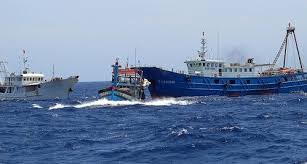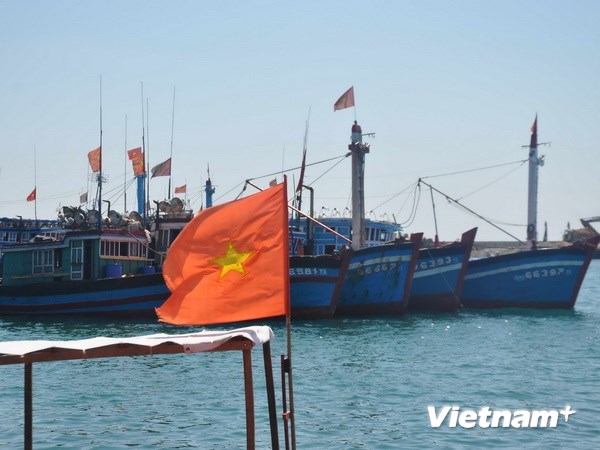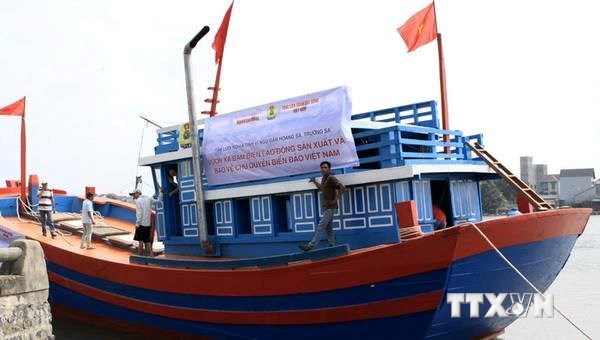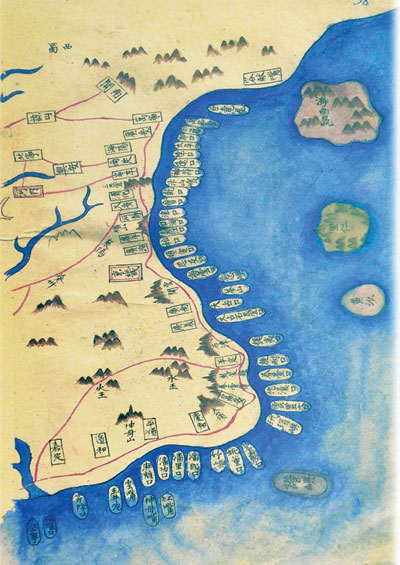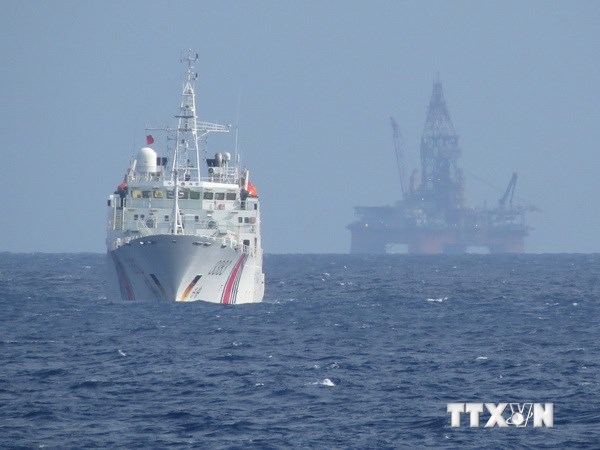Following are excerpts from an interview given by Hoang Viet, a researcher on East Sea disputes and a member of the East Sea Research Foundation (ESRF), to VOV ( The Voice of Vietnam) online:
*China’s Hunan province publishing house recently released a vertical ten-dash map swallowing the East Sea. How is this new map different from the nine-dash map drawn by China before?
The new map has similarities and also differences from the previous one. In terms of consistencies, it indicates China's ambition in the East Sea and that China is claiming sovereignty over additional territory. However, there are inconsistencies in the specific territorial claims and number of 9, 10 or 11 dashes.
In 2009, China for the first time sent diplomatic notes opposing a Vietnamese report and the Vietnam – Malaysia joint statement on expanded waters to the UN Secretary General.
In the two diplomatic notes, China attached a “U-shaped line” map featuring only nine dashes. The Hunan province’s newly-published vertical map shows ten dashes. Generally speaking, China's overall ambition remains unchanged but there are fundamental inconsistencies in the number of 9, 10 or 11 dashes.
*According to the illegal map, how will the so-called sovereignty of China be extended?
China has always insisted on its sovereignty over the East Sea through the so-called “U-shaped line” or “nine-dash line” claims that have globally been recognised as absurd and clear violations of international law. Despite having no legal basis, China still wants to use its strength to realise the so-called “claim”.
In fact, after its publication of a “nine-dash line” map in 2009, China met a host of national objections, including Vietnam, Indonesia and the Philippines, and more recently the US also requested the Chinese Government to clarify what its “U-shaped line” claim is? No country in the world recognises the “U-shaped line”, but China.
*Can you please elaborate on the "ten-dash line" and how will it fully cover the coasts of Malaysia, the Philippines and Vietnam?
The fact shows that it covers many countries but in the Chinese map, this line accounts for over 80 percent of the East Sea, thereby encompassing all exclusive economic zones (EEZ) and continental shelves of the countries such as Vietnam, Malaysia, Indonesia and the Philippines.
For this reason, this causes a great deal of harm to China and all ASEAN countries that become involved in the East Sea disputes.
Under the United Nations Convention on the Law of the Sea (UNCLOS) provisions, each country will have an Exclusive Economic Zone (EEZ) and continental shelf but based on a groundless map since 1947, China itself has recognised “9,10, 11 dash line” maps without clear longitudes and latitudes.
Thus, they occupy the entire EEZs and continental shelves of other countries that are entitled to enjoy benefits under the UNCLOS. Clearly, China does not comply with the UNCLOS in which China itself is a member and it is trampling on international law.
*Does the publication of this new map show the unjustified sovereignty claim by China which has triggered greater tensions in the East Sea?
This action is a sequence of actions followed by China. In 2007, China took brazen actions in the East Sea including sinking fishing boats of Vietnamese fishermen. In 2011, Chinese ships cut the cables of Vietnamese Binh Minh ship.
In 2012, China conducted more aggressive actions in many waters including Scarborough Shoal which is under control of the Philippines.
In 2013, the situation remained tense and especially this year, China illegally placed its oil rig Haiyang Shiyou-981 in Vietnam’s EEZ and continental shelf.
*In addition to the illegal stationing of the oil rig Haiyang Shiyou-981 in Vietnam’s waters, what is China’s ambition and scheme by publishing its “ten-dash line” map?
China, in the so-called "Chinese Dream" (also known as Dream of China), always want to become the Number One power in the world. To reach that goal, the country has to transform itself into a sea power. Consequently, China must expand its territory from the East Sea which is the first point in its strategic ambition to monopolise the vast sea area.
Owning the East Sea will serve as a springboard for China to occupy other waters such as the East China Sea, the Indian Ocean and the Pacific Ocean. This demonstrates China’s great ambition and it will be a threat not only to Vietnam and some ASEAN countries but the whole region and the world at large.-VNA




